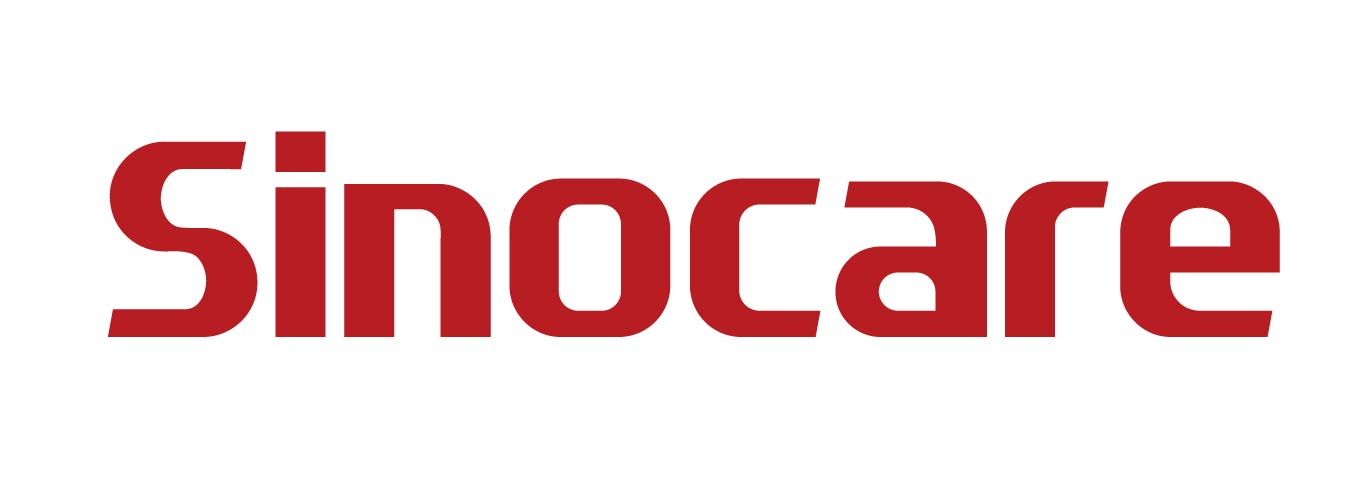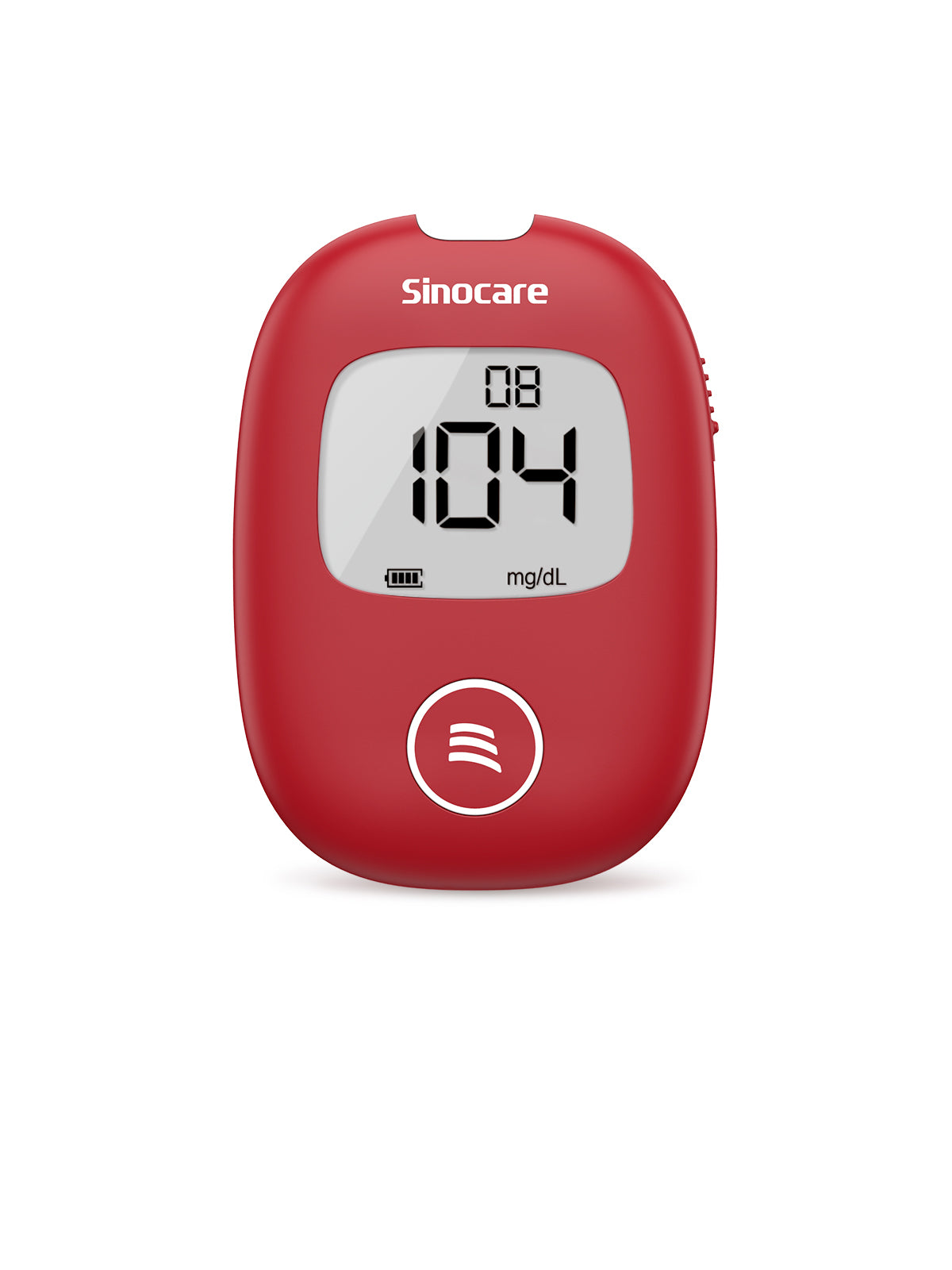Measurement Unit & Quantity Help
Table of Contents
If you are buying your glucose meter for the first time, you might encounter the following questions:
- Which measurement unit should I choose, mmol/L or mg/dl?
- How many test strips should I buy, 50, 100, or more
To answer the above questions, we need to know 3 things:
- Which country do I live in?
- Which measurement unit does my medical system prefer?
- How is my doctor saying about the testing frequency?
Here we have listed some useful resources to help you get the right product.
Countries, Medical Practices, and Measurement Units
There are 2 different measurement units when testing our glucose levels: mmol/L and mg/dl.
Generally, each country adopts one type for its medical practices (for example, doctors are using devices in mg/dl in Spain, and most of the glucometers in the local market are in mg/dl also).
Here is a table for the measurement units and official recommendations in different countries:
(Note: the below information is for general reference only, you can have the opposite unit based on your travelling routine or clinical practices)
| Country | Preferred Unit | Local Authority/Health Media | Local References |
|---|---|---|---|
| United Kingdom | mmol/L | NHS | "Home test done at any other time Over 11 mmol/L…" Origin |
| Spain | mg/dl | SNS | "La cifra de glucosa en sangre se considera normal cuando es menor de 110 mg/dl…" Origin |
| Italy | mg/dl | Salute | "valori uguali o superiori a 126 mg/dl sono considerati indicativi di diabete" Origin |
| Germany | mg/dl | BfArM | "Glukosespiegel…Abbildung des Blutzuckerspiegels zur Bestimmung der Insulindosis…mg/dl (Milligramm pro Deziliter)" Origin |
| France | Both | HAS | "une glycémie > 1,26 g/l (7,0 mmol/l) après un jeûne de 8 heures et vérifiée à deux reprises;" "l'unité de mesure, mg/dl ou mmol/l, souhaitée pour l’affichage par le lecteur de glycémie;" Origin |
| Poland | mg/dl | Ministerstwo Zdrowia | "…pacjent zgłasza objawy infekcji, złe samopoczucie lub stężenie glukozy we krwi wynosi powyżej 240 mg/dl…" Origin |
| Romania | Both | NAMMDR | "Tabelul 1.1. Criteriile ADA de diagnostic pentru DZ (6)…Glicemia à jeun ≥ 126 mg/dl (7 mmol/l)…" Origin |
| Netherlands | mmol/l | NZa | "Aan het onderzoek zullen 240 volwassen patiënten met DM1 deelnemen van wie de bloedglucosewaarden minder dan 70% van de tijd in range zijn, dus 3,9-10,0 mmol/L…" Origin |
| Belgium | mg/dl | FAMHP | "La prévalence totale estimée du diabète est définie comme une glycémie à jeun ≥ 126 mg/dl ou une hémoglobine glycosylée (HbA1C) ≥ 6,5%…" Origin |
| Czechia | mmol/l | MZCR | "Pokud je hodnota glykémie u novorozence pod 2,5 mmol/l, kódujte dle příčiny z diagnostické kategorie P70.0 – P70.9. V dokumentaci musí být vždy zaznamenán terapeutický zásah (krmení, infuze) a kontrolní odběr." Origin |
| Greece | Both | Υπουργείο Υγείας | "α) η τιμή της γλυκόζης νηστείας είναι ≥126mg/dl (7.0 mmol/l), όταν επιβεβαιωθεί τουλάχιστον σε μια επόμενη μέρα" Origin |
| Portugal | mg/dl | SNS | "…No entanto, valores de glicose no sangue entre 110 e 126 mg/dL já indicam uma tolerância diminuída à glicose, ou seja, uma situação de pré-diabetes." Origin |
| Sweden | mmol/l | 1177.se | "Det brukar inträffa om blodsockervärdet blir lägre än 3–4 mmol/l, men det kan skilja sig mellan personer." Origin |
| Hungary | Both | NNK | "Erre azért van szükség, mert az FDG PET vizsgálat elvégzéséhez az szükséges, hogy megérkezésekor vércukor szintje 11 mmol/L (200 mg/dL) alatt legyen." Origin |
| Austria | mg/dl | ÖGPH | "…Nüchternblutzucker 126 mg/dl oder mehr: Diabetes. Um die Diagnose zu bestätigen, wird die Messung in der Regel an einem anderen Tag wiederholt." Origin |
| Bulgaria | mmol/l | Министерство на Здравеопазването | "Това може да стане сутрин на гладно – захарен диабет е налице при ниво на глюкозата в кръвта над 7.0 ммол/л…" Origin |
| Denmark | mmol/l | SST | "Fysisk aktivitet udskydes ved blodsukker >17 mmol/l, indtil det er korrigeret. Det samme gælder ved lavt blodsukker < 7 mmol/l." Origin |
| Finland | mmol/l | THL | "…Paastoarvo plasmanäytteestä mitattuna (mmol/l)…" Origin |
| Slovakia | mmol/l | Ministerstvo zdravotníctva | "Hraničná glykémia nalačno (IFG) je definovaná ako glykémia nalačno v rozmedzí 5,6 – 6,9 mmol/l." Origin |
| Ireland | mmol/l | HSE | "…Two HbA1c results ≥ 48mmol/mol (≥ 6.5%) 2-3 months apart confirms a diagnosis of diabetes…" Origin |
| Croatia | mmol/l | HZJZ | "ČINJENICA: Uredne vrijednosti šećera na tašte su do 6.1 mmol/l, a u osoba s dijabetesom se preporučuje da šećer prije obroka ne bude viši od 6 mmol/l odnosno 8 mmol/l 2h nakon obroka… " Origin |
| Lithuania | mmol/l | SAM | "glikemija nevalgius >= 7.0 mmol/l; atliekant GTT su 75 g gliukozes, po 2 val…" Origin |
| Slovenia | mmol/l | NIJZ | "…Ta težave po navadi zazna šele, ko je krvni sladkor že zelo visok, preko 10 mmol/l, kar se lahko zgodi šele čez nekaj let." Origin |
| Latvia | mmol/l | VM | "1.8. Glikozes līmeņa noteikšana venozo asiņu plazmā (mmol/l) tukšā dūšā…" Origin |
| Estonia | mmol/l | Terviseamet | "Diabeeti diagnoositakse, kui patsiendil on: glükoos paastuplasmas ≥ 7,0 mmol/l või…" Origin |
| Luxembourg | Both | Sante | "…la glycémie à jeun, mesurée dans 2 prises de sang consécutives, est supérieure à 126 mg/dl (7 mmol/L)…" Origin |
Official Testing Frequency
If I have diabetes, how many times should I test per day?
It depends on the medical conditions. Health authorities such as NICE (UK) or DDG (Germany) suggested glucose testing frequency:
Type 1 Diabetes
"You should test your blood glucose at least 4 times a day – before each meal and before you go to bed. You might need to test more often, such as before and during driving, when you exercise, if you start to feel unwell, during illness (as part of sick-day rules) or if you have problems with hypos."
-NICE Guidance. Source Link
Type 2 Diabetes (Doctor Perspective)
"1.16.13 Do not routinely offer self-monitoring of capillary blood glucose levels for adults with type 2 diabetes unless:
- the person is on insulin or
- there is evidence of hypoglycaemic episodes or
- the person is on oral medication that may increase their risk of hypoglycaemia while driving or operating machinery or
- the person is pregnant or is planning to become pregnant (see the NICE guideline on diabetes in pregnancy). [2015, amended 2022]."
-NICE Guidance. Source Link
For UK patients, that is the reason you can not get the NHS-funded glucose monitors: If you are not using the medicine that lowers the glucose level (which may cause hypo), you don’t need a self-test.
Let’s see more official recommendations on how many times we should test our glucose levels:
| Diabetes | Therapie | Messfrequenz | Messsituation präprandial: vor der Mahlzeit postprandial: 1,5 Stunden nach der Mahlzeit | Messintervall | Teststreifenbedarf |
|---|---|---|---|---|---|
| Typ 1 | ICT | mindestens 5 × täglich | präprandial und ggf. postprandial, vor dem Schlafengehen | täglich | > 5 Streifen täglich mindestens 600 Streifen pro Quartal |
| nachts (2:00 bis 4:00 Uhr) | alle 2–3 Wochen | ||||
| in besonderen Situationen (Hypoglykämieverdacht, Sport, Krankheit, vor der Autofahrt …) | bei Bedarf | ||||
| Typ 1 Kinder und Jugendliche | ICT | mindestens 10 × täglich | Präprandial, postprandial, vor dem Schlafengehen, nachts | täglich | > 10 Streifen täglich mindestens 1000 Streifen pro Quartal |
| in besonderen Situationen (vor/bei/nach Sport, | bei Bedarf | ||||
| bei fieberhaften Infektionskrankheiten …) | alle 2–3 Stunden | ||||
| Typ 1 | Insulinpumpe | mindestens 5 × täglich | präprandial und ggf. postprandial, | täglich | > 5 Streifen täglich mindestens 600 Streifen pro Quartal |
| vor dem Schlafengehen nachts (2:00 bis 4:00 Uhr) | alle 2–3 Wochen | ||||
| in besonderen Situationen (Hypoglykämieverdacht, Sport, Krankheit, vor der Autofahrt, technische Fehlleistung …) | bei Bedarf | ||||
| Typ 1 Kinder und Jugendliche | Insulinpumpe | mindestens 12 × täglich | Präprandial, postprandial, vor dem Schlafengehen, nachts | täglich | > 12 Streifen täglich mindestens 1200 Streifen pro Quartal |
| in besonderen Situationen (vor/bei/nach Sport, | bei Bedarf | ||||
| bei Infektionskrankheiten, technische Fehlleistung …) | alle 2–3 Stunden | ||||
| Typ 1 mit Hypoglykämiewahrnehmungsstörung | ICT/Insulinpumpe | mindestens 8 × täglich | präprandial und postprandial, vor dem Schlafengehen | täglich | > 8 Streifen täglich mindestens 800 Streifen pro Quartal |
| nachts (2:00 bis 4:00 Uhr) | alle 2 Wochen | ||||
| in besonderen Situationen (Hypoglykämieverdacht, Sport, Krankheit, vor der Autofahrt, technische Fehlleistung …) | bei Bedarf | ||||
| Typ 2 | ICT | mindestens 4 × täglich | präprandial und ggf. postprandial, vor dem Schlafengehen | täglich | > 4 Streifen täglich mindestens 500 Streifen pro Quartal |
| nachts (2:00 bis 4:00 Uhr) | alle 2–3 Wochen | ||||
| in besonderen Situationen (Hypoglykämieverdacht, Sport, Krankheit, vor der Autofahrt …) | bei Bedarf | ||||
| Typ 2 | CT | mindestens 2 × täglich | präprandial (vor Injektion) | täglich | > 2 Streifen täglich mindestens 250 Streifen pro Quartal |
| nachts (2:00 bis 4:00 Uhr) | alle 2–3 Wochen | ||||
| in besonderen Situationen (Hypoglykämieverdacht, Sport, Krankheit, vor der Autofahrt …) | bei Bedarf | ||||
| Typ 2 | Bedtime-Insulin | mindestens 2 × täglich | präprandial nüchtern, vor dem Schlafengehen | täglich | > 2 Streifen täglich mindestens 200 Streifen pro Quartal |
| nachts (2:00 bis 4:00 Uhr) | alle 2–3 Wochen | ||||
| in besonderen Situationen (Hypoglykämieverdacht, Sport, Krankheit, vor der Autofahrt …) | bei Bedarf | ||||
| Typ 2 mit Hypoglykämierisiko | Sulfonylharnstoff- therapie | mindestens 2 × pro Woche | präprandial nüchtern, vor dem Schlafengehen | 1 × pro Woche | > 1/2 Streifen täglich mindestens 50 Streifen pro Quartal |
| nachts (2:00 bis 4:00 Uhr) | alle 2–3 Wochen | ||||
| in besonderen Situationen (Hypoglykämieverdacht, Sport, Krankheit, vor der Autofahrt …) | bei Bedarf | ||||
| Typ 2 ohne Hypoglykämierisiko | orale Therapie | in besonderen Situationen (Manifestation, zu Schulungs- zwecken, Nichterreichen der Therapieziele …) | bei Bedarf | mindestens 50 Streifen pro Quartal | |
| Typ 1/Typ 2 Schwangerschaft | ICT/Insulinpumpe | mindestens 7 × täglich | präprandial und postprandial, vor dem Schlafengehen | täglich | > 7 Streifen täglich mindestens 700 Streifen pro Quartal |
| nachts (2:00 bis 4:00 Uhr) | wöchentlich | ||||
| in besonderen Situationen (Hypoglykämieverdacht, Sport, Krankheit, vor der Autofahrt, technische Fehlleistung …) | bei Bedarf | ||||
| Gestationsdiabetes | Ernährung | mindestens 15 × pro Woche | nüchtern, | täglich | mindestens 350 Streifen pro Quartal |
| präprandial und postprandial, vor dem Schlafengehen | 3 × pro Woche | ||||
| Gestationsdiabetes | Insulin | mindestens 7 × täglich | präprandial und postprandial, vor dem Schlafengehen | täglich | > 7 Streifen täglich mindestens 650 Streifen pro Quartal |
| nachts (2:00 bis 4:00 Uhr) | alle 2 Wochen | ||||
| in besonderen Situationen (Hypoglykämieverdacht, Sport, Krankheit, vor der Autofahrt, technische Fehlleistung …) | bei Bedarf |
-Deutschen Diabetes Gesellschaft. Source Link
Based on our medical conditions, we can get the testing frequency from the above recommendations.
Meanwhile, DDG gives the same suggestion as NICE: don't test too much if we are type 2 and don’t rely on medicine.
However, testing our blood sugar level in certain circumstances, such as after eating a new snack (or before breakfast), is a good practice.
What to do if I get the wrong unit?
Don’t worry if you get a glucose monitor measuring in mmol/l while expecting in mg/dl.
For all devices, there is a conversion formula between mmol/l and mg/dl:
mg/dl = 18 × mmol/l
For example, if the device shows 7.5 mmol/l, the result equals 135 mg/dl (7.5*18).






